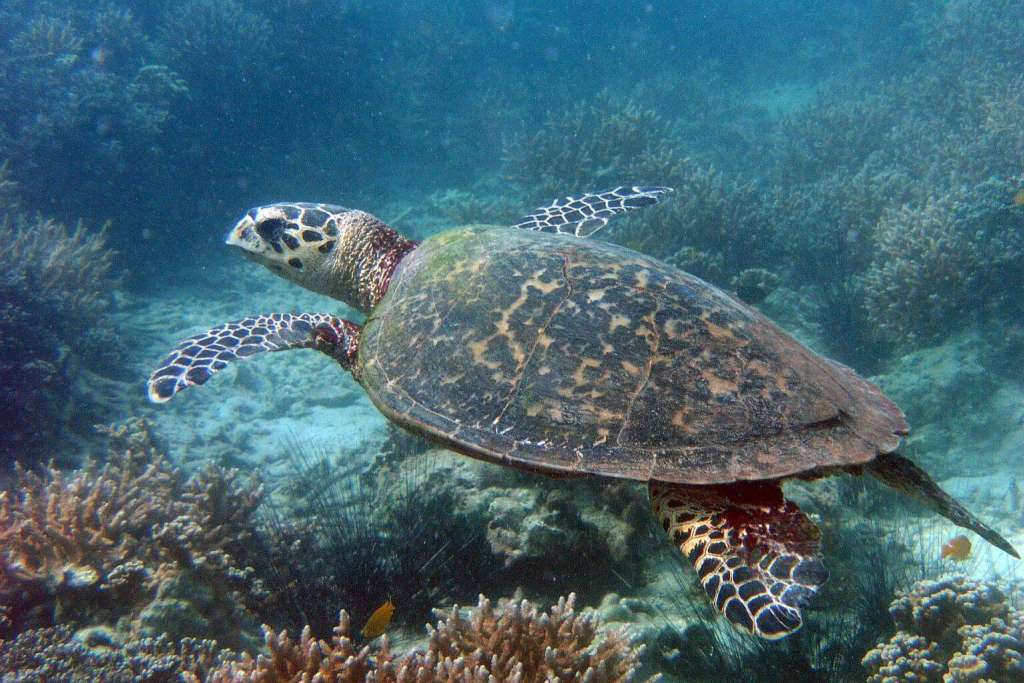The gentle sea turtle has long fuelled the imagination, and Singaporeans flock to turtle sanctuaries elsewhere to catch sight of them.
But sea turtles also live and nest right here, unknown to many. Unfortunately, the two species of sea turtles most commonly found here – the hawksbill turtle and the green turtle – are considered critically endangered.
While there has been no formal population count, more is being done to study the elusive creatures.
The Straits Times has learnt that a Marine Turtle Working Group – comprising staff from the National Parks Board (NParks), academics from institutions such as the National University of Singapore, and interest groups and individuals – is being formalised.
Such collaborative work has been ongoing since 2006, but the formalisation of the working group will better tap the expertise of the group to look into a wider range of issues, such as the development of turtle hatchery procedures.
Earlier this year, HSBC Singapore donated $500,000 to build the country’s first sea turtle hatchery, to be set up at the southern lagoon on Small Sisters’ Island by the end of next year. It will form an integral part of Singapore’s first marine park.
Experts in the working group will also continue to monitor beaches for egg-laying turtles and conduct research on turtle movements in waters here. There have been 10 reported turtle sightings at East Coast Park and Changi Beach since 2012.
It is possible that there have been more visits that were not observed or reported, said Dr Lena Chan, group director of NParks’ National Biodiversity Centre.
“Hence, NParks felt it was timely to expand the current turtle management procedure, which focuses on reporting of incidents, to include a wider range of activities… in partnership with various academic and interest groups who have indicated interest in marine turtle issues.”
Mr Stephen Beng, chairman of the marine conservation group of the Nature Society (Singapore) and a member of the working group, said sea turtles depend on many habitats – they nest on sandy beaches, forage for food in mangroves and seagrasses, and find shelter in coral reefs. All of these habitats can be found in Singapore.
He added: “As integral parts of the marine ecosystem, sea turtles are also useful indicators of the vitality of our overall marine environment.
“Singapore is also unique as our shores are more urbanised compared with our neighbours’, and the working group will work on recommendations to balance maintaining shoreline integrity and biodiversity survival.”
Science-backed strategies to conserve wildlife
Not much is known about the critically endangered sea turtles of Singapore. But a marine turtle working group hopes to change that with research.
At least nine groups are studying how to conserve local wildlife with science-backed strategies.
Animals such as pangolins, otters and both species of monkeys in Singapore – long-tailed macaques and Raffles’ banded langurs – have already benefited.
The working group for the shy langur was set up in August to map out an action plan for the conservation of this species in the coming years.
In May, members of the otter working group leapt into action to rescue and rehabilitate a six-week-old smooth-coated otter pup which almost died when its family did not return for it.
Dr Lena Chan, group director of the National Parks Board’s National Biodiversity Centre, said working groups focus on animals at most immediate risk of local extinction, as well as those associated with issues that affect a range of stakeholders.
She said: “Working groups for otters, macaques and pythons were formed to better understand and address issues such as human-wildlife interaction and conservation, to minimise negative impact on stakeholders while also achieving conservation aims.”
For Ms Sabrina Jabbar of the macaque working group, a milestone was a “monkey-herding” process some members developed that kept animals away from homes in Bukit Timah and reduced instances of human-animal conflict. This involved a trained guard at a hot spot shooing monkeys from residential areas by tapping a stick or umbrella on the ground, or telling the monkeys to go away.

This article was first published on Nov 14, 2016.
Get a copy of The Straits Times or go to straitstimes.com for more stories.






